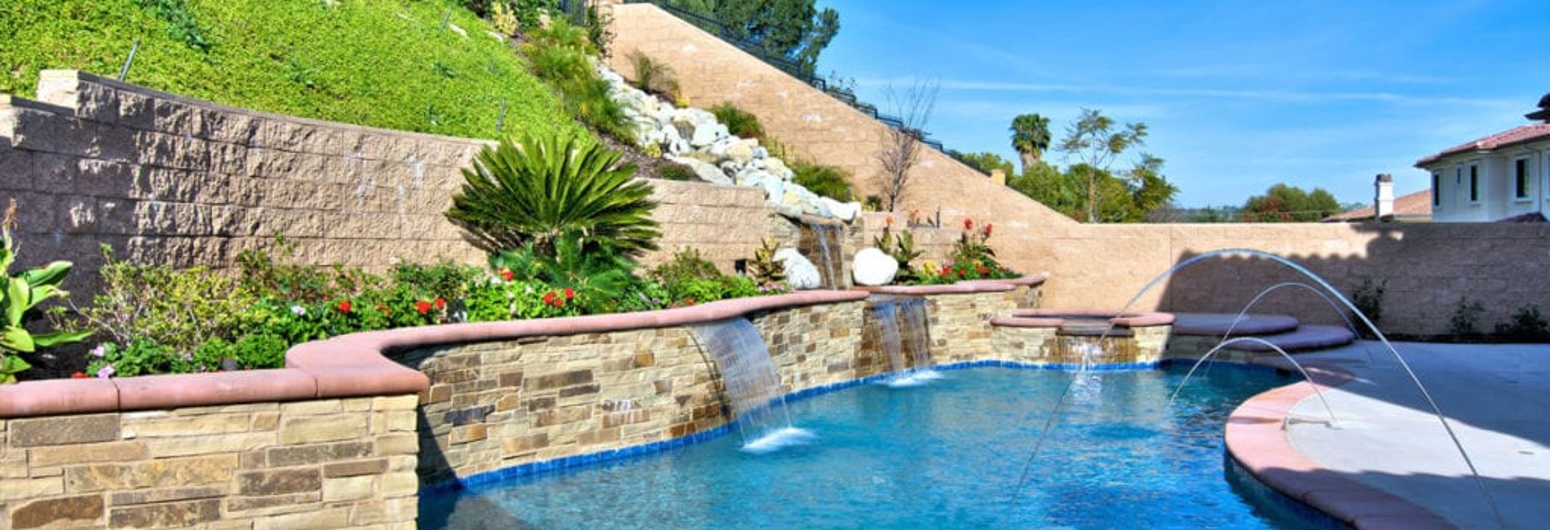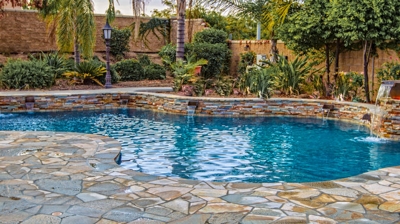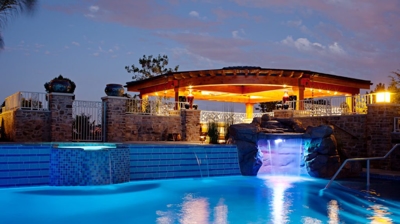There are about 10.4 million residential pools in the United States.
If you don’t have a concrete pool in your backyard, you could be missing out on precious memories with your family. Although building a concrete pool might seem complicated, in this guide, we will break down the steps to build a concrete pool.
1. Choose a Place on Your Property to Build the Pool
Before you start planning the concrete pool of your dreams, you need to figure out where you can put the pool. Do you have enough room in your backyard? Do you have to remove anything such as trees or utility lines?
It can cost you a lot more money than originally planned if you have to get rid of trees or any other obstacles.
Make sure you take a look at the blueprints to ensure there are no utility lines where you want to build your pool. You can also call utility companies and ask them to mark where all of the lines are on your property.
Once you clear any obstacles, start thinking about the shape and size of your pool. Keep in mind you need to leave enough room for the pump system and other features.
As a bonus, you should make sure your pool is in a location where debris won’t wash into it during a rainy day.
2. Get Ready to Do a Rough Sketch
Even if you’re not a professional builder, you can draw the basic design of your pool. Grab your pencil and paper and draw the pool of your dreams.
Decide whether or not you want a square or round pool. As a rule of thumb, most home concrete pools fit these dimensions: 10 ft x 20 ft in size and up to 10 ft in depth. You can have a shallow or deep pool, depending on the needs of your family.
When you draw the sketch, make sure you put markings that indicate the pool concrete to be 6 in thick. You should also include any special features in your design, such as pool steps, lights, and slides.
3. Hire an Expert Pool Builder
Once you have your basic design, it’s time you take it to a professional pool builder for approval. A pool contractor will be able to tell you if your design is realistic and make any modifications necessary to make it a reality.
Before you sign a contract with a pool contractor, make sure you check their credentials to ensure they’re licensed and insured.
4. Pool Building Permits
Once you have the prints for your pool approved by your contractor is time you get all the building permits for your pool. Building a pool requires you to modify the lot, and you also need to follow safety concerns, which is why you need the right permits.
You will need to go to the department of your local city hall to apply for all the permits. Make sure you have all of the right documentation and the finalized pool design, so you don’t get sent back.
Some delegations will also require you to obtain a separate electrical permit for the wiring of the pool. Keep in mind that many companies will handle all of the permits for you. If getting all of the permits in order is a concern of yours, hire a contractor that handles everything for you.
Also, you might need to run it by your neighborhood’s homeowner’s association if applicable.
5. Measurements and Markings
After you have obtained all of the necessary permits, the work can begin. Your pool contractor will start by taking measurements and marking the outline of the border of the pool, walls, steps, and any other extensions.
6. Digging Out the Soil
When it’s time to dig out the soil, your pool builder might subcontract a backhoe. After most of the soil has been dug out, it’s time to measure the depth of the pool.
Different length sticks will keep track of the depth if you want your pool to have a deep and a shallow end. Pool contractors will keep the dug-out soil nearby in case they dig too deep. They will use the leftover soil to even out the terrain.
Then, your contractor will smooth out the bottom of the pool and the walls. After, they will take a large carpenter’s level to make sure the entire pool bottom is leveled.
The remaining soil will help you level the pool if needed. If your pool has different depths, they will create a gradual slope.
7. Metal Pool Frame and Plumbing
The next step is to frame the pool using steel rebars and plywood boards. Your contractor will lay the rebars along the interior of the pool in a crisscross pattern.
They will keep the rebars three inches above the soil. Also, they will stand thick plywood around the upper edges of the pool, so that the concrete doesn’t spill over.
Under the rebars, the contractor will place all of the necessary plumbing lines for the filtration system.
8. Filtration System and Concrete
After all of the plumbing lines are ready, the electrician will connect them to the filtration system.
Once everything is hooked, they can begin pouring in the concrete to fill in the pool. The concrete will get smoothed over, and then it needs to be covered with a plastic tarp for five days.
9. Finishing Touches
After the cement has settled and is covered with waterproof glass or cement tiles, the contractor will install a coping around the edges of the pool.
Once everything has dried off, you can start to fill your pool with water. The fastest way to do it is by getting a water truck to dump the water.
However, if you have the patience, you can always use garden hoses.
This is How to Build a Concrete Swimming Pool
Now that you have a general idea of how to build a concrete swimming pool, it’s time to get the pool of your dreams.
To build a concrete pool, you need to start with a general sketch, hire a pool contractor, get all of the necessary permits, start the construction process, and enjoy your pool.
Find your nearest pool design center.



